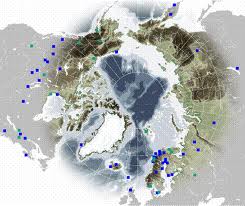In Rovaniemi 8th of June 2011, the Council of the University of the Arctic (UArctic) celebrates the tenth anniversary of its launch, which was held in the same city in 2001. The occasion is being marked by a special seminar organized at the University of Lapland on the theme of Green Growth and the Arctic.
The occasion is being marked by a special seminar organized at the University of Lapland on the theme of Green Growth and the Arctic, with keynote speeches from Ólafur Ragnar Grímsson (President of Iceland), Hannele Pokka (Permanent Secretary of Finland's Ministry of the Environment), Gustaf Lind (Sweden's Arctic Ambassador), and J. Okalik Eegeesiak (President of the Qikiqtani Inuit Association). The seminar discussions examined the question of whether a 'Green Growth' opportunity exists for the Arctic, or whether the destiny of the North is to remain an area of resource extraction.
The Chair of the UArctic Council, Jim McDonald of the University of Northern British Columbia remarks, "It is only appropriate that the University of the Arctic returns to Rovaniemi to mark the first decade of its remarkable growth and development. Lapland has been the crucible for many important circumpolar processes. It should be noted that UArctic's tenth anniversary coincides – not coincidentally – with the twentieth anniversary of the Rovaniemi process that began in 1991 with the Arctic Environmental Protection Strategy, which led to the establishment of the Arctic Council. The decisions taken here pave the way for our organization's next ten years."
 The history of UArctic goes long back, to a proposal made to the Senior Arctic Officials of the Arctic Council to look into the establishment of an 'Arctic university.' The subsequent work performed by the Circumpolar Universities Association laid the groundwork for the network and activities that exist today.
The history of UArctic goes long back, to a proposal made to the Senior Arctic Officials of the Arctic Council to look into the establishment of an 'Arctic university.' The subsequent work performed by the Circumpolar Universities Association laid the groundwork for the network and activities that exist today.
On June 12, 2001, the University of the Arctic officially came into being. At a Launch event in Rovaniemi, Finland, two hundred people gathered to celebrate the realization of this dream. The organization was established with the principles of interdisciplinarity, circumpolarity and diversity. Its strength based on support not only by institutions of higher education and governments, but also that of northern indigenous peoples. In the first years after the launch, UArctic's core programmatic activities were established with the Circumpolar Studies undergraduate program and the north2north mobility program. Enrollments in Circumpolar Studies and north2north exchanges now number many hundred, and these first students are already making their mark in northern science and public leadership.
The UArctic International Secretariat was established at the University of Lapland, Finland, in 2001, and soon afterwards UArctic hired President Lars Kullerud to lead the activities and overall development of UArctic. UArctic's administration was gradually distributed to offices in almost all Arctic countries. The establishment of Thematic Networks in 2005 marked a new direction in UArctic's programmatic delivery, supporting new research and educational cooperation among smaller groups of members with common interests and expertise. This development was also supported by increased graduate-level programs including PhD networks and field schools.
 The University of the Arctic's importance as an international actor was demonstrated in the role it played in the 2007-2008 International Polar Year, helping to coordinate the education and outreach activities resulting from the IPY's international scientific research projects. The UArctic Rectors' Forum first met in 2007, which provided a new opportunity for the leadership of the circumpolar region's higher education institutions to address areas of common interest. To better serve its members, UArctic developed the GoNorth program to promote student recruitment to northern higher education institutions and the UArctic Catalogue as joint listing of course and program information from all members.
The University of the Arctic's importance as an international actor was demonstrated in the role it played in the 2007-2008 International Polar Year, helping to coordinate the education and outreach activities resulting from the IPY's international scientific research projects. The UArctic Rectors' Forum first met in 2007, which provided a new opportunity for the leadership of the circumpolar region's higher education institutions to address areas of common interest. To better serve its members, UArctic developed the GoNorth program to promote student recruitment to northern higher education institutions and the UArctic Catalogue as joint listing of course and program information from all members.
UArctic has accomplished much to date in creating an empowered and sustainable North. It is telling that the organization's original vision, goals and values remain valid today, while it has grown to meet additional needs and serve more areas of the Circumpolar North. The success of the organization can truly be seen, however, in the large numbers of students who have benefited from educational opportunities that would not have been possible without the University of the Arctic and the collective efforts of its members.
Source:UArctic
